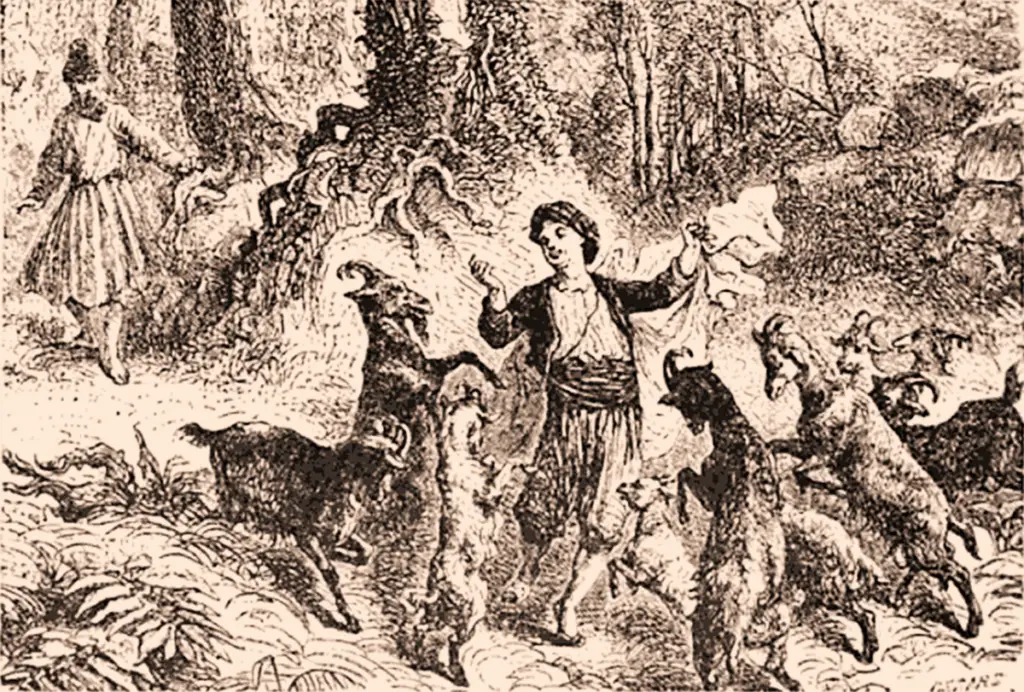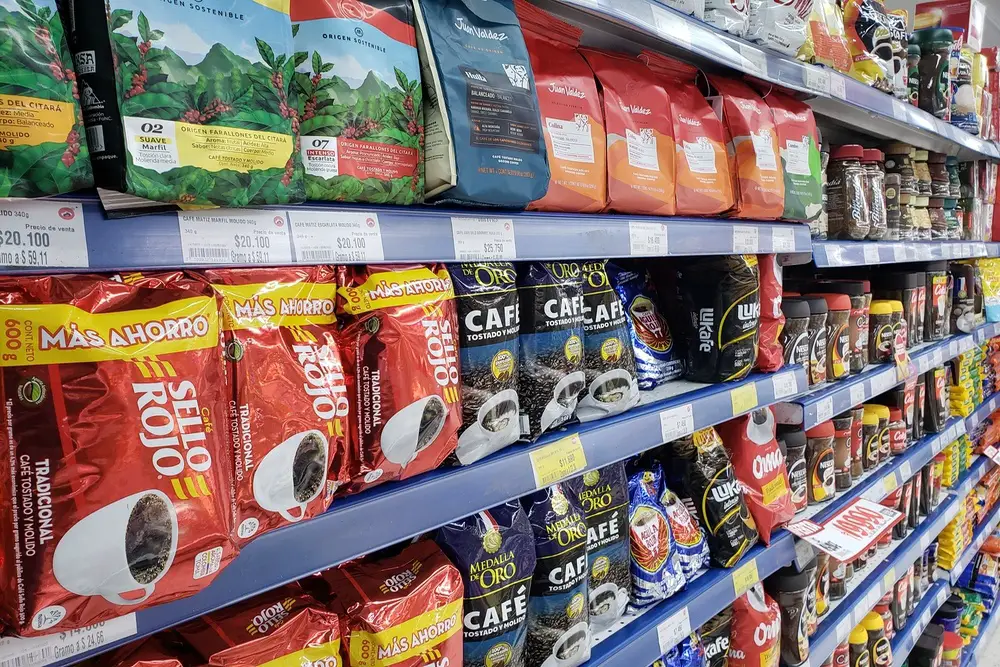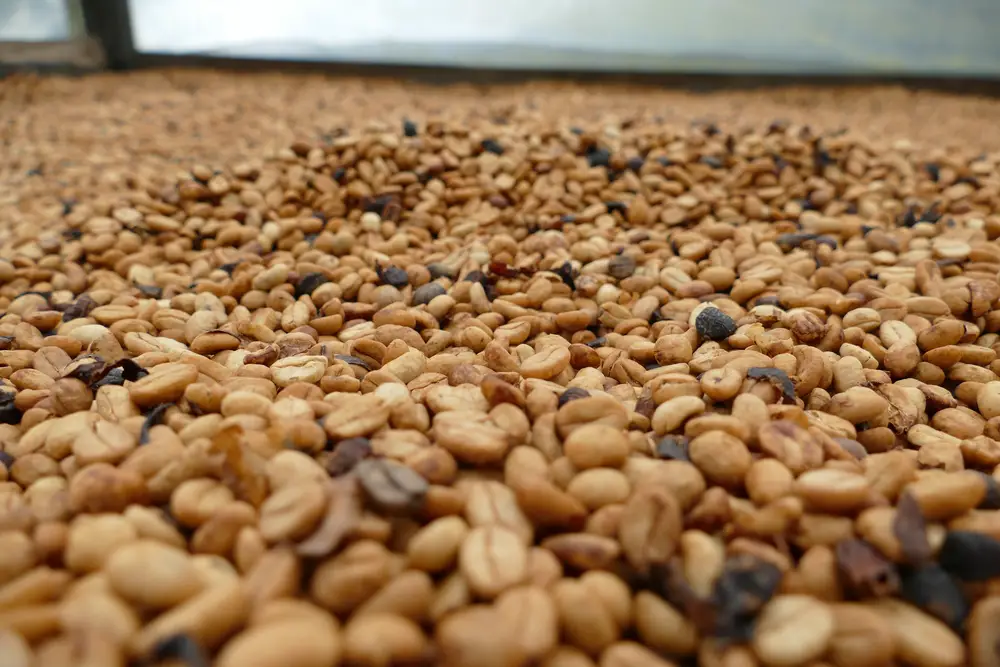Coffee is the second most-consumed drink in the world after water. Crazy, right? This drink has managed to captivate the hearts of many people around the world. Countless flavors, aromas, recipes, and coffee products are protagonists during the day of many people.
But to understand the success of this fruit, we must know how its origin was and how it has evolved over the years to become an everlasting drink.
In this blog, you can embark on a complete and fascinating tour of the history of coffee around the world. You will understand its origin, its importance in different countries, and how it is today. Make a cup of coffee and let’s get started!
Table of Contents
The origin of coffee, Africa
To start talking about the history of coffee, we have to locate in Ethiopia, Africa around 700 A.D. where this tour begins. Although there are no true records of this event, historians agree that it is the most accurate history to tell the discovery of coffee.
The story of Kaldi and his crazy goats
Kaldi was a shepherd of a herd of goats that lived in the Kaffa province located in Ethiopia. Every afternoon he would sit on the grass playing special melodies with his flute. That’s how he called the goats when the sun set.

But one afternoon, Kaldi began to play his flute as usual and no goat came to the meeting place. At that time, Kaldi decided to go after his herd and found them near a bush plantation with berries or red fruits. The goats were very happy and lively eating the leaves and the red fruit of that tree that Kaldi had never seen.
The story goes that the goats were so lively and active, they even seemed to be dancing. Kaldi did not understand what was happening. So he decided to take some red fruits and take them to a religious man who was in a convent near him. He wanted to see if he could get a clearer answer about the strange behavior of their goats.
Both Kaldi and the religious tried to taste the fruit without any preparation or cooking. They were a little afraid of what might result or the effects they might have. They noticed that it was very bitter and its taste was not very pleasant. Therefore, the monk decided to throw the red fruits into the fire to get rid of them. It was at that moment when they noticed the pleasant smell emanating from it.
They did not want to give up, so they tried a new preparation. They tried to boil the red fruits and then drink that infusion, but it did not have many results either, as it continued to be a slightly bitter drink. However, after a few hours, they felt the same energy that they saw in the goats after eating the fruit.
Finally, they wanted to try another way to prepare it. They decided to put the red fruits on the fire because they noticed that they gave off a very particular and pleasant aroma. Then, they made the infusion with the already roasted fruits. That’s when they discovered what we know today as the coffee drink. Amazed by its effects and taste, coffee consumption began to expand little by little.
How did coffee get to Asia?
Although Kaldi’s story cannot be proven, one thing is certain. Coffee arrived at the Port of Mocha in Yemen in the 15th century. This port became one of the main centers of distribution of this fruit. This is why the word mocha is related to coffee and is now another recipe of coffee with chocolate.
The history of the miraculous coffee in Yemen
Our second stop goes back to Yemen, Arabia; where one of the first facts about discoveries of this drink and the tree is told.
Aldhabbani, a religious leader from Aden, Yemen, spent several years in Ethiopia and there began drinking qahwa (the drink we know today as coffee in Arabic). He felt that this drink helped him to become more agile in his religious activities and that was what attracted him.
But one day he began to get seriously ill and it was the qahwa that cured him. From there it began to be said that coffee was a miraculous and healing drink, in addition to the other effects that were already well known at the time.
For this reason, coffee was very common among monks and various religious leaders, as they drank this infusion every day in the morning. It helped keep them awake during long days of prayer. His success began to be most noticeable throughout Egypt, Persia, and Turkey.
Bada Budan and the stolen seeds
Now, at this stop, you will also know a story like that of Kaldi, which, although there are not many records to confirm it, is the story that for many years has been part of the history of coffee on this continent.
When the Ottoman Turkish Empire arrived, the crops of the territory were very protected because of political issues. During this time, a monopoly of crops was formed. People were not allowed to export any type of grain or seed to another region so that the empire was the only one who could produce and export certain foods and fruits, among them, coffee.
But it was just then that a man named Bada Budan changed history. He stuck some coffee seeds to his body and took them to a village in India. His reason for sneaking them is that he too had experienced the dose of energy produced by these red fruits.
Then, in the late 17th century and throughout the 18th century coffee arrived in Indonesia, thus being the door for coffee to also conquer the heart of this continent. Since that time, Indonesia has been a major coffee producer. Today it is the fourth-largest exporter in the world.
Years later, in 1706, an Indian coffee plant was brought to the Amsterdam Botanical Garden to expand throughout Europe.
The first cafes in Mecca
As we mentioned above, for several years coffee was consumed in various ways. The beans were chewed directly, the fruits were crushed to form a dough and eaten, or they were crushed and stirred in water. The latter was the closest preparation to the coffee that we know today.
It was until the eighteenth century that the current process of coffee began. This means, drying the beans, roasting them, and then making the infusion.
During the 17th and 18th centuries, the first cafes began to open. Places dedicated to preparing this drink where it was possible to have a social life, dance, play, and sing, but also talk about other more important topics. These early establishments in Mecca, one of the busiest places during that time, were called qahveh khaneh.
Its success is because before there was no place resembling a cafe. And, with the rise of this drink, these establishments were rapidly expanding throughout Asia. Such was their rise, that these were also known as the school of the wise or as penny universities, places where valuable information was exchanged.
How did coffee get to Europe?
Our next stop will be on the European continent in the 17th century, when this fruit that would revolutionize the world is finally made known.
It was Leonhard Rauwolf, a German physician and botanist, who brought the first approaches of coffee to Europe. He described it as a very black and powerful drink against many evils and ailments. A drink that was consumed daily in the morning by many people in Ethiopia and Yemen.
Then, towards the middle of the century, Prospero Alpini, an Italian physician and botanist, wrote about coffee in his book “Egyptian medicine”. Over the years, several writers and travelers to the Near East began to introduce the fruit and drink of coffee throughout the European continent.
His arrival was not very well received by all, as its dark color and its healing and energetic powers generated suspicion in several religious sectors. Later we will tell you why this happened. But despite this, his success began in several places in England, Austria, France, Germany, and the Netherlands. The Netherlands was one of the first European countries to grow, roast, and grind coffee properly since 1600.
The popularity of coffee made the habits of Europeans change. Many started their day drinking beer or wine, but then Coffee began to be the drink that filled them with energy throughout the day.
Just as in Asia, cafes began to be important places where entertainment and political conversations came together. At the time, English men went out of work and spent several hours of the night in these pubs discussing political and religious issues. Their wives knew that when the man did not come home, it was because they were in some cafe.
The Coffee Prohibition
In its arrival in Europe, Venice was no exception. There were two versions of the cafe. The first, a magical and medicinal drink that was going around the world. And, the second, a drink that should be banned because it was the product of the devil.
Nowadays it’s strange to hear someone say that coffee is a drink of the devil, right? But the truth is that by 1511 it was not very strange and coffee was even banned in Mecca. But why?
There are several reasons why they wanted to ban this drink by marking it as sinful:
- The government and several political leaders knew that around a cup of coffee, discussions, and debates about government decisions were originating.
- The cafes were also a place to question various religious practices and that is why the monks were afraid that, in these places, people would conspire against them.
- Many monks saw coffee as a devil’s drink because it worked as a substitute for alcohol for followers of Islam. Since Islam forbade the consumption of alcohol, people turned to coffee for its similar effects.
- They saw coffee as a drink that could intoxicate.
All this discussion came down to Pope Clement VIII, who at first agreed that it was a drink of the devil. However, he agreed to try it so that he could give the final decision. And it was so, that its taste captivated him and did not forbid it. This allowed the coffee drink to continue conquering the hearts of its consumers with its peculiar taste and aroma.
How did Coffee Get to America?
Our next and one of the last stops is in the American continent. Finally, this drink that had been so controversial arrived! Here I will also tell you a fascinating story of how the coffee got here.
The story of the young navy officer
In 1714, the mayor of Amsterdam decided to give a coffee plant to King Louis XIV of France. Louis decided to plant it in his Royal Botanical Garden in Paris. Years later, in 1723, the young navy officer Gabriel de Clieu, obtained a branch of this tree. It is not known precisely whether he snuck it to take it on the long journey that awaited him or whether it was the same king who gave him the plant to harvest elsewhere.
The story goes that Gabriel kept the plant in a glass box to protect it from the weather and the long journey across the Atlantic sea. However, he had to fight various adversities so that the plant did not die. He went through a time of shortage of drinking water, storms and even had to fight pirates who wanted to steal the plant.
Finally, he arrived in Martinique, a French island located near Venezuela and Puerto Rico; and the first thing he did was plant his small tree. There, in 1726, the first coffee harvest occurred. During that season, about 18 million coffee trees were grown.
This is how the great expansion of coffee along the coast, South and Central America began. Likewise, this route went through French Guiana, then through Brazil, Jamaica, and all of America.
The arrival of coffee in Brazil
It was in 1727 when coffee landed in the north of the country to stay. From 1852 it would become the largest producer and exporter of coffee worldwide. But how did Brazil do it?
Like the previous story, Colonel Francisco Melo Pahleta got a coffee plant. This time it was in the midst of a territorial conflict between the Dutch and French. Francisco wanted to get coffee seeds from French Guiana and take them to Brazil no matter what he had to do. The French governor did not want to give the Colonel any seeds, so Francisco seduced the governor’s wife to achieve it.
This is how the Colonel began cultivation in Pará and obtained the crops in 1808. It would become a whole coffee empire years later.
The arrival of coffee in Colombia
Like any country, Colombia also has a great history of how coffee expanded.
The Jesuit priest, Francisco Romero, helped speed up its expansion. When the faithful congregated, they were to sow coffee for every sin they confessed and would thus be forgiven by God. It was thanks to this, that the expansion of coffee began to take place throughout the country.
At the end of the19th century, with the boom of the economy, coffee production increased from 60,000 sacks to more than 600,000. This positioned it as the third-largest country in coffee production. Also, by the end of the century, coffee became its main export product.
Colombia is recognized for the quality of its coffees, so you should know the best coffees in Colombia.
The arrival of coffee in Mexico
Coffee arrived in Veracruz; however, one of the places that most planted coffee was Chiapas. Its expansion was not as rapid as in other countries, because chocolate was a drink deeply rooted in Mexicans. However, coffee did not take long to conquer the palate of this country.
In 1789, the Manrique cafe was the first cafe to open in the historic center of Mexico City. But it was until the end of the 19th century that cafes began to expand throughout the country.
Coffee in the Modern Era
Since its inception, coffee has not stopped innovating and going around the world. Being the second most-consumed drink in the world, it never ceases to amaze us with new recipes, flavors, and aromas. Its consumption is global, although the Nordic countries, the United States, Italy, and Spain are its largest consumers.
The first coffee maker was born during the Industrial Revolution. In 1818, a Parisian who was engaged in metalworking invented the first coffee maker. To this day it is used very commonly, of course, with some modifications. Its appearance in the United States was until 1865 when he managed to get sponsorship. By that time, 1864, Jabez Burn created the first roaster in New York.
Years later, in 1871, John Arbuckle invented the machine that would revolutionize the mass production of coffee. That machine was in charge of filling, weighing, sealing, and marking the coffee bags.
In 1901, Luigi Bezzera created the first espresso machine in Italy. It used very hot water and steam to make fast coffee, although with a slightly bitter taste due to the high temperatures to which it was exposed. It was until roughly 1940 that several Italians created the espresso machine we know today. During the 20th century, we find the most significant advances in machines and the way of making coffee that we know today.
Another curious fact is that, in 1900, Brazil began to negotiate with the Large Company Nestlé. By that time, the coffee waste left in Brazil was quite a lot. So they were looking for something to do with it. Years later, and with a lot of research, they created instant coffee or freeze-dried coffee.
Didn’t you know that freeze-dried coffee came from coffee waste? For that reason, it is not considered a high-quality coffee and you can not expect to have a complete experience around a cup of instant coffee. However, there are some very good instant coffees in the world that you should try!
Coffee Today
Our last stop is at the end of the 20th century and what we’ve lived in the 21st century.
During this time the largest and most popular cafes around the world have been created. Despite the many years of history that this drink has, its evolution does not stop. We are at a time when coffee is an art and a whole culture has been created around it.
Its discovery was related to the strange behavior of some goats that ate some red fruits. But its legacy continues to this day with amazing stories.


